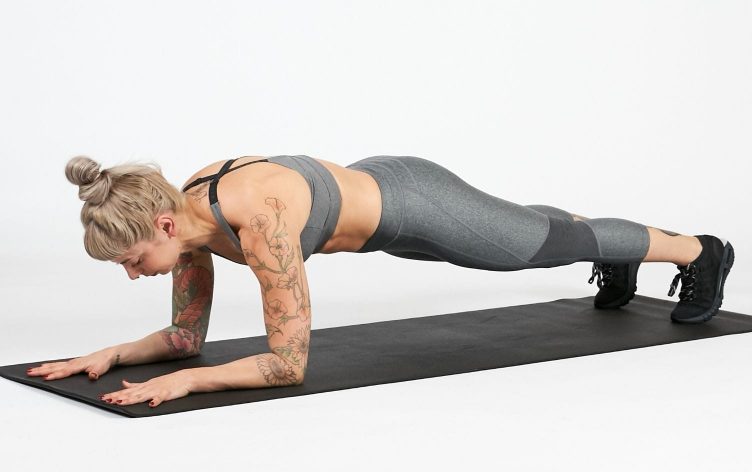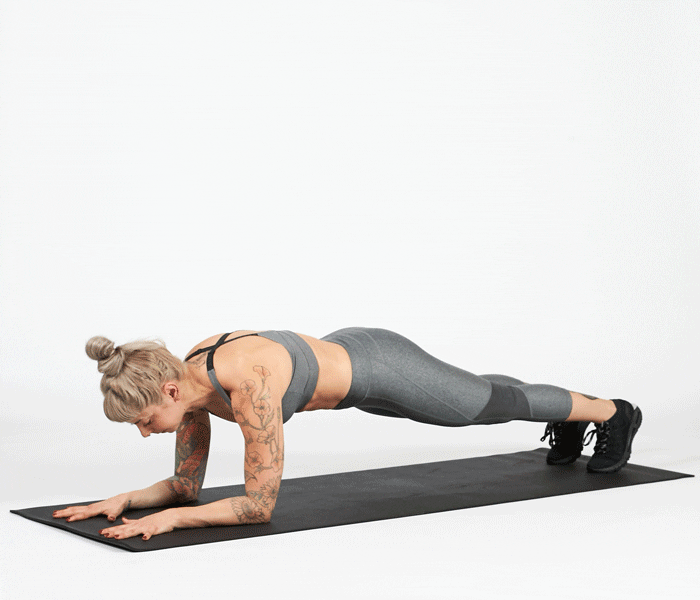
The traditional plank exercise is one of the best core-strengthening moves out there. In addition to working your superficial core muscles (i.e., the muscles that make a “six-pack” pop), the plank also targets the transverse abdominis — a deep abdominal muscle that plays a key role in keeping your trunk stable during movement, according to Carol Mack, DPT, an Ohio-based certified strength and conditioning specialist and board-certified specialist in sports physical therapy. And research in Medicine and Science in Sports and Exercise suggests core stability plays an important role in preventing lower-body injuries in athletes.
Plus, planks are easy to learn, and require zero equipment, making them a great choice for beginners and advanced exercisers alike.
However, performing planks with poor form limits the benefits of the exercise, and may increase your risk of shoulder and lower back pain.
Here are the most common plank mistakes to avoid if you want to reap maximum core benefits.

With a plank, you want your body to form a straight line from shoulders to feet. To achieve this position, you need to engage your core muscles — and keep them firing for as long as you hold the plank. However, if your ab muscles aren’t strong enough to support your body (yet), you’ll likely compensate by either sagging your hips toward the floor or pushing them up toward the sky. In either case, moving your hips out of alignment decreases the muscle activity of your abs, which then decreases the effectiveness of the exercise, Mack says.
Sagging the hips can also put extra pressure on your lower back, increasing your risk of lower back pain over time.
The fix: Mack recommends performing the plank in front of a mirror so you can check that your body is in a straight line from shoulders to feet. If you find you can’t hold the plank without sagging or lifting your hips, modify the exercise by elevating your hands on a box, bench, counter or another stable surface. Gradually lower the incline over time until your hands are on the floor.

Plank challenges may be popular (a 62-year-old man just set a new record by holding a plank for more than eight hours), but trying to hold a plank for longer than 1 or 2 minutes may not offer worthwhile benefits. “If you hold a plank for five minutes, I don’t know how much that really translates into daily function, or even sports-specific strength,” Mack says. If you’re able to hold a plank for 1 or 2 minutes without breaking a sweat, you may be better off advancing the exercise, as opposed to simply holding the position longer.

The fix: Once you’re able to hold a plank for 1 or 2 minutes without much effort, try a more challenging variation, like a plank with leg lifts. To do this, simply alternate lifting each foot off the floor (squeeze your glute) and holding briefly while in plank. “[Planks with leg lifts] are more challenging for the core, but also have the benefit of working other muscles,” Mack says. In this instance, you’ll strengthen your glutes.

Sometimes, Mack sees people hold a plank with their weight too far forward or backward. As when you allow your hips to sag or lift, shifting your weight too far forward or backward is a way of compensating for core weakness. However, throwing your upper body out of alignment not only lowers ab recruitment — and, by extension, reduces the benefits of the exercise — it may also lead to shoulder or neck pain over time. “Sometimes, people shrug up through their shoulders too much and overuse the muscles around the upper trap, which connects the neck to the shoulders,” Mack says.
The fix: The next time you get into a plank position, look down and gauge where your hands or elbows are relative to your shoulders. Your shoulders should be directly in line with your hands (if performing a straight-arm plank) or your elbows (if performing a bent-arm plank), Mack says. If you can’t hold a plank without shifting forward or backward, modify the movement by elevating your hands on an incline.
Check out “Workout Routines” in the MyFitnessPal app to discover and log workouts or build your own with exercises that fit your goals.










